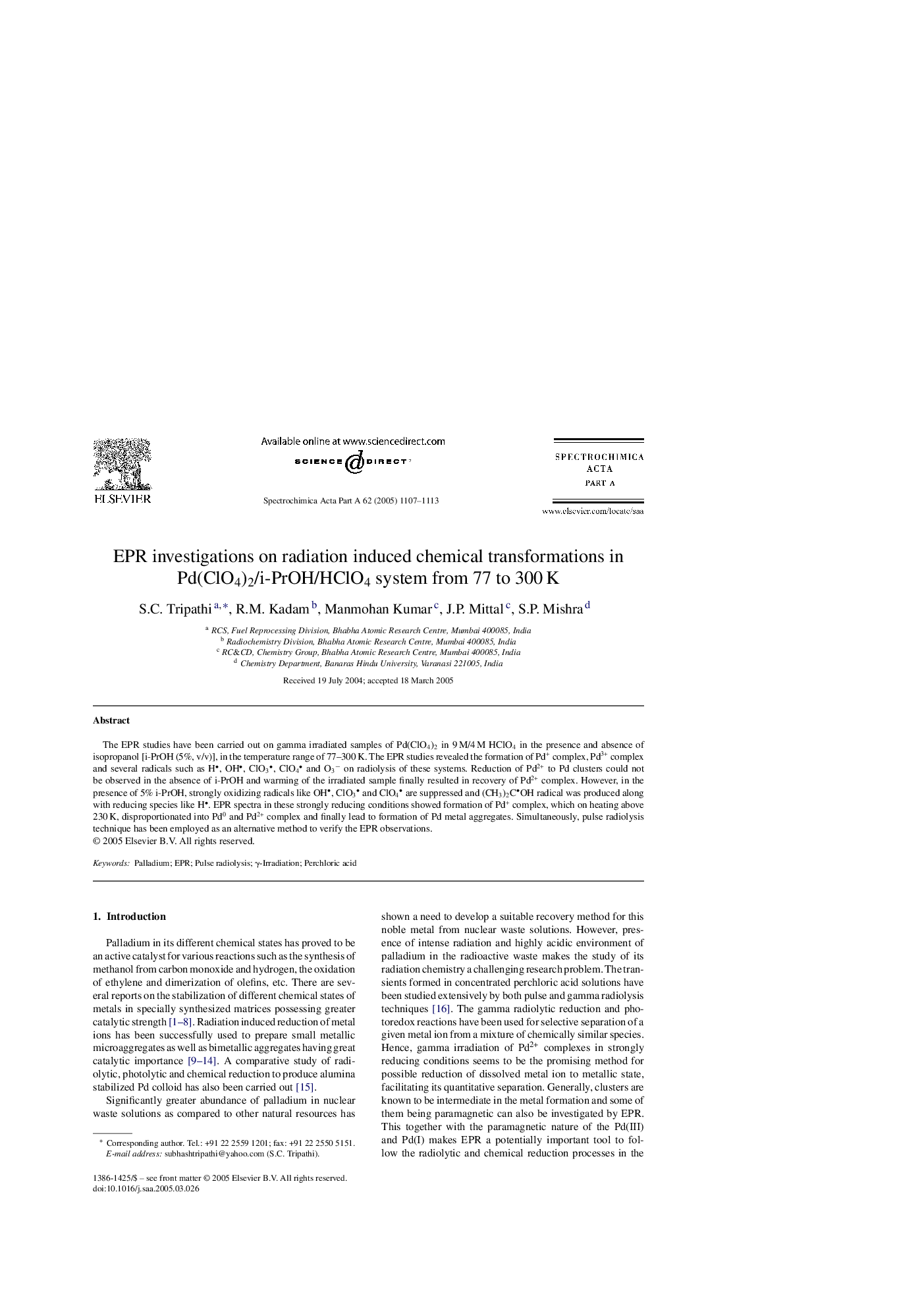| Article ID | Journal | Published Year | Pages | File Type |
|---|---|---|---|---|
| 9756961 | Spectrochimica Acta Part A: Molecular and Biomolecular Spectroscopy | 2005 | 7 Pages |
Abstract
The EPR studies have been carried out on gamma irradiated samples of Pd(ClO4)2 in 9Â M/4Â M HClO4 in the presence and absence of isopropanol [i-PrOH (5%, v/v)], in the temperature range of 77-300Â K. The EPR studies revealed the formation of Pd+ complex, Pd3+ complex and several radicals such as H, OH, ClO3, ClO4 and O3â on radiolysis of these systems. Reduction of Pd2+ to Pd clusters could not be observed in the absence of i-PrOH and warming of the irradiated sample finally resulted in recovery of Pd2+ complex. However, in the presence of 5% i-PrOH, strongly oxidizing radicals like OH, ClO3 and ClO4 are suppressed and (CH3)2COH radical was produced along with reducing species like H. EPR spectra in these strongly reducing conditions showed formation of Pd+ complex, which on heating above 230Â K, disproportionated into Pd0 and Pd2+ complex and finally lead to formation of Pd metal aggregates. Simultaneously, pulse radiolysis technique has been employed as an alternative method to verify the EPR observations.
Related Topics
Physical Sciences and Engineering
Chemistry
Analytical Chemistry
Authors
S.C. Tripathi, R.M. Kadam, Manmohan Kumar, J.P. Mittal, S.P. Mishra,
